Jiangnan has a unique charm in autumn
At this time, under the warm sun in late autumn, the autumn feeling of Jiangnan slowly spread out between the mountains and rivers. On November 23, I took train t152 to Yangzhou to find the long-awaited beautiful autumn scenery in Jiangnan. This trip to the south of the Yangtze River, returning from Yangzhou-Nanjing-Wuxi-Shanghai-Suzhou-Huzhou-Hangzhou, decided to abandon Wuzhen, Zhouzhuang, Xitang... which had been criticized by the public for a long time, and to visit ancient and simple ancient towns, old streets, villages that had never been set foot in small groups.

Yangzhou
Yangzhou not only has the scenery of "Spring Breeze is Ten Miles on Yangzhou Road", but also the romance of "Fireworks fall under Yangzhou in March". Even morning tea has become a local characteristic."Wrap water in the morning and wrap water in the evening", which means that Yangzhou people go to the teahouse to drink tea in the morning and go to the bathroom to take a bath at night, which fully includes Yangzhou people's pursuit of quality of life. Arriving in Yangzhou, first go to the century-old restaurant "Yechun Tea House" to taste the authentic Yangzhou cuisine of lion's head, crab powder soup dumplings, and four-color pot cakes; then visit Daming Temple, which is known as "Yangzhou's No. 1 Scenic Spot" and Wenchang Pavilion, the "Landmark Building in Yangzhou City."

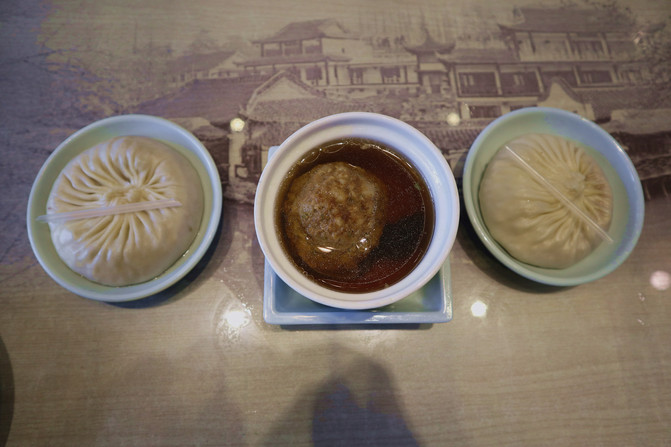







The next morning, I went to the century-old "Fuchun Tea House" to sip the "Kuilongzhu" tea and taste the delicious taste. I felt that Yangzhou morning tea only had Huaiyang cuisine snacks and soup dumplings, and there were not many varieties. I like Cantonese morning tea to have more "casual" varieties. After morning tea, visit the ancient city of Yangzhou: Nanhexia Street is a place to experience the ancient city of Yangzhou known as the "Lane City"; along the ancient canal, there are Qionghua Temple, Gaomin Temple, Puhaddin Cemetery and Catholic Church, the world's four major religious activities venues; Dongguan Street is bustling with the market, with many time-honored brands, old shops, and old houses. The most noteworthy thing is that it brings together various specialty snacks of Huaiyang cuisine. It is a delicious place that you don't want to visit when you come; The most worth visiting is the "He Garden", known as the "No. 1 Garden in the Late Qing Dynasty. The main attractions include Fudao Corridor and Riding Building. Another wonder is that there is a bright moon reflected in the pool water of the stone mountain house during the day, and it changes with the viewer's perspective.
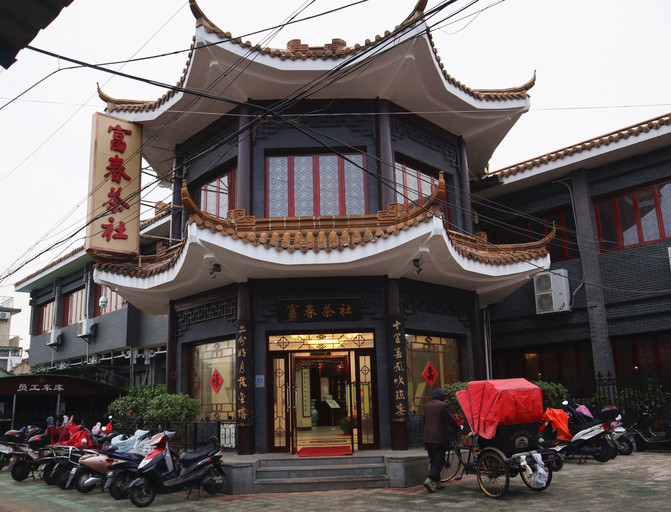




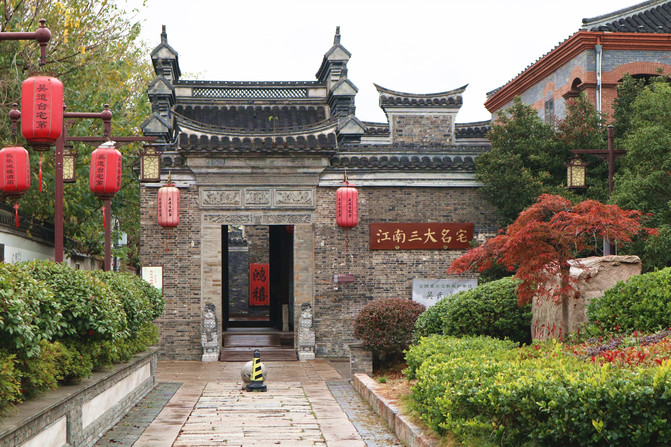








The weather finally cleared up in Yangzhou on the third day, and we rushed to the "Slender West Lake" early in the morning. It is very beautiful. The beauty lies in the fact that the lake is long, slender, winding and winding. It is dotted with scenic spots such as Diaoyutai, Wuting Bridge, White Pagoda, and Twenty-Four Bridge. It is even more unique with autumn scenery. Then I went to Shigong Temple to visit two more than 200-year-old ginkgo trees in the temple. At this time, the ground was full of golden armor.
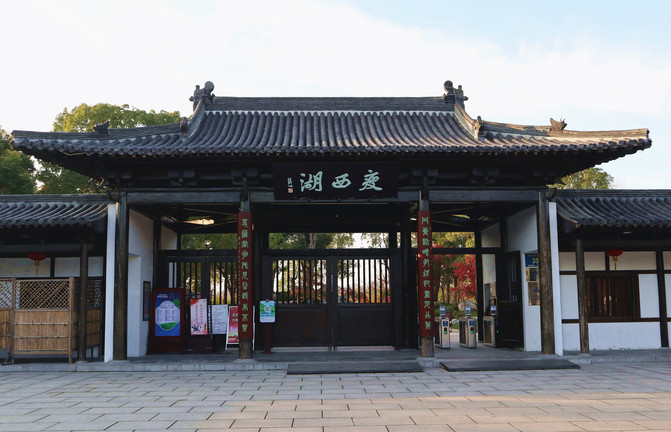















Nanjing
The purpose of going to Nanjing is to enjoy autumn. Perhaps the autumn in Nanjing is not as gorgeous as Kanas or as magnificent as Inner Mongolia, but the autumn in Nanjing has a lingering feeling that cannot be found anywhere. Arriving in Nanjing, it rained all day long. I braved the rain to go to Hongfenggang in the Botanical Garden. I walked through the hills and looked around. At this time, the maple leaves were brightly red and the forest was dyed, interpreting the romance of "frost leaves blooming like flowers do not wait for spring"! Then I went to Zhonghua Gate. I wanted to climb the city wall and walk because of the rain, so I had to go to the Confucius Temple for a walk.












The next day, it was sunny and caught up with Qixia Mountain, which is known as "one of China's four major maple attractions." Entering the scenic area, climb up the road at the foot of the mountain. The maple trees on both sides are neatly arranged. The maple trees, black trees, cypress trees and occasionally there are a few green miscellaneous trees in the mountain, making it even more colorful. Qixia Mountain not only has the beautiful scenery of red maples, but also two century-old ginkgo trees in Qixia Ancient Temple. The ancient temple has red walls and golden ginkgo trees, reflecting the colorful maple leaves around the temple. This is really an intoxicating place. However, I feel that the maple varieties in Qixia Mountain are not as many as those in Hongfenggang in the Botanical Garden.















Wuxi
Wuxi, known as the "Pearl of Taihu Lake" and comparable to "Little Shanghai", has been established since the Shang Dynasty and has been one of the four major rice markets in history. I want to see its long-standing charm, as well as the soft and vivid human touch of Jiangnan cities. When I arrived in Wuxi, it was rainy and rainy. I first visited the "Yuantouzhu" Peninsula lying across the northwest bank of Taihu Lake, and then went to the famous garden in the south of the Yangtze River "Li Garden". Due to the influence of cloudy days, the scenery was very ordinary.








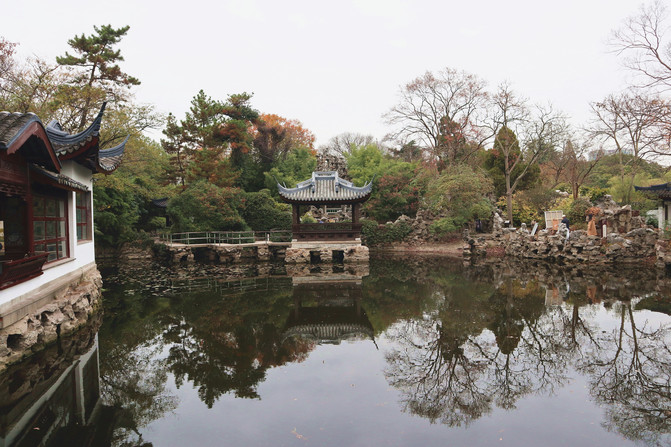


The next day, I walked through the old Nanxiaotang district in Wuxi, Nanchang Ancient Street and Nanxiaotang Ancient Street. There are now a small number of ancient houses in the Ming and Qing Dynasties, which have strong characteristics of people in the south of the Yangtze River. The two streets are separated by an ancient canal, and the "Qingming Bridge" on both sides of the canal is one of the important symbols in the old district. This is a typical Jiangnan water town along the Grand Canal. It is known as the "Jiangnan Water Lane, the out-of-print place of the canal." Finally, we moved to Nanchan Temple, a thousand-year-old temple. It is said that the main building in the temple, the Daxiong Hall, was original in the Tang Dynasty, and the other ancillary halls were rebuilt in the Ming and Qing Dynasties.










Shanghai
Shanghai has a very dazzling first gathering place for buildings from various countries-the Bund, but my favorite is the ancient town of Zhujiajiao in its outer suburbs. When I arrived in Zhujiajiao Ancient Town, it was rainy and rainy, so I couldn't see her most beautiful side. I found an upstairs platform by the river to sit down and drink afternoon tea, and slowly enjoyed the tranquility that originally belonged only to the people of the ancient town.
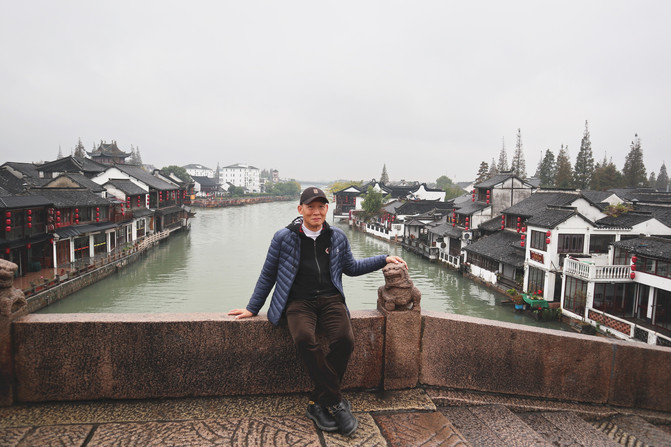












The next morning, Zhujiajiao Ancient Town was particularly peaceful, probably because of Monday. The ancient town's nine old streets are built along the river, and more than a thousand houses are built along the river. Among them, North Street, also known as the "First Line Street", is the most completely preserved first street of Ming and Qing Dynasties buildings in the suburbs of Shanghai. It starts from Fangsheng Bridge in the east and reaches Meizhou Lane in the west. The more than 300-meter section is a typical Jiangnan Old Street. It seems that we are the only two of us walking around in the small streets and alleys. Today, we are looking forward to seeing the beautiful ancient town on a sunny day. In the afternoon, we leave the ancient town to check in on the Shanghai Bund and stroll along the Huangpu River.
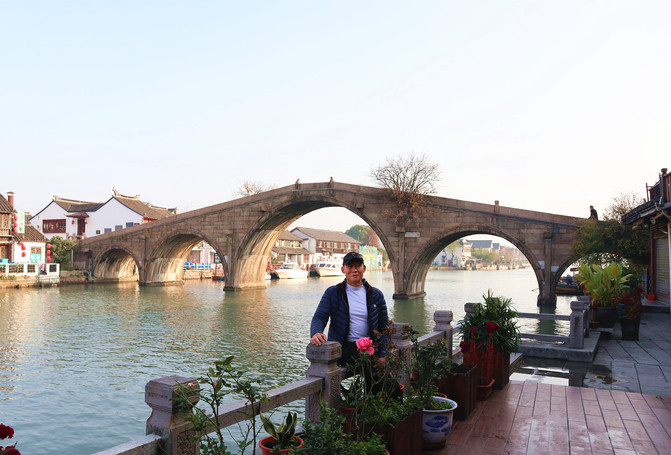


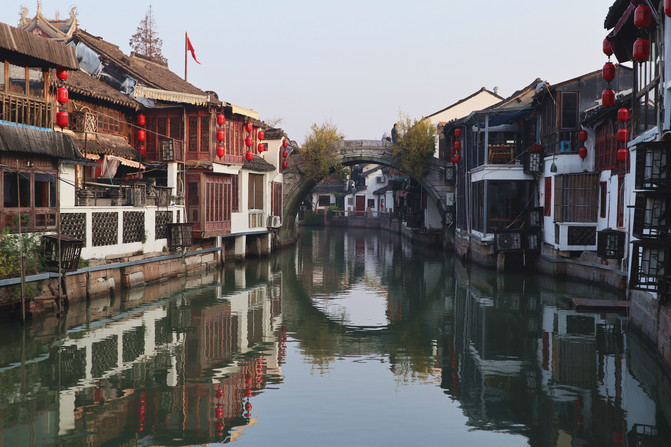








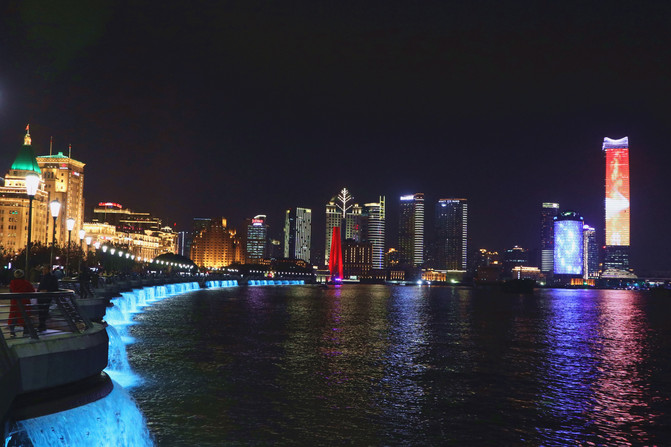
Suzhou
Suzhou has always been famous for its elegant gardens. It has the reputation of "Jiangnan gardens are the best in the world, and Suzhou gardens are the best in the south of the Yangtze River". It is also known as the "Oriental Water" because of its ancient water town with small bridges and flowing water. Attractions include Humble Administrator's Garden, Lion Grove, Canglang Pavilion, Lingering Garden, Zhouzhuang, Tiger Hill, etc., which have been abandoned since they have been there before. After arriving in Suzhou, take a bus to "Xishan Island", the largest island in Taihu Lake, and then charter a car to tour around the island. At this time, golden ginkgo leaves dot every corner of the village on the island; in the east village, there is the legendary "Jingxiu Hall" where Qianlong's gold houses were hidden in the palace. The most appreciated value inside is the very exquisite brick carvings and wood carvings; Mingyuewan Ancient Village Walking on the mossy stone road, next to the winding river, there is a camphor tree more than 1200 years old. There is also a long ancient pier extending into the lake;...
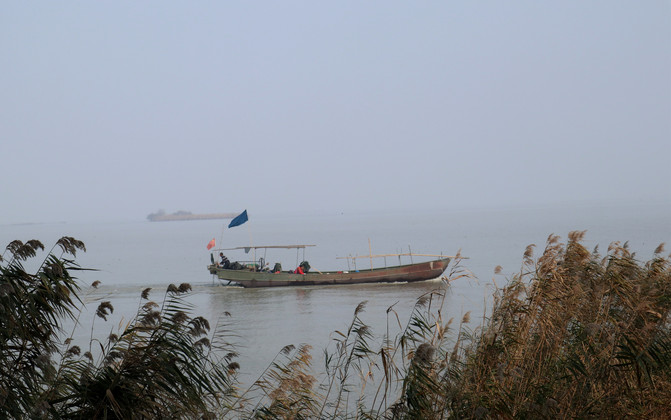






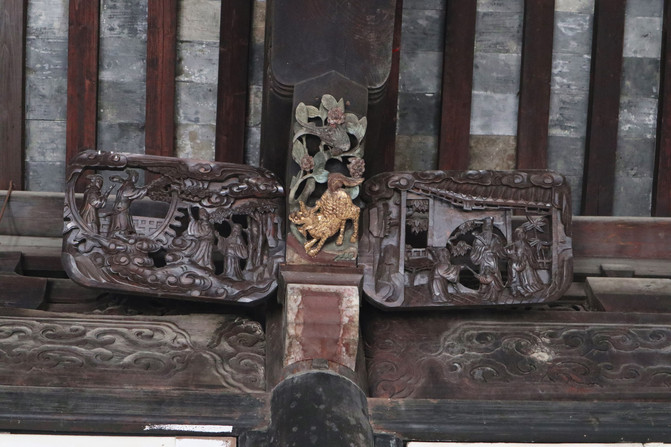





. The next day: It is said that there is a saying that "if you don't visit Hanshan Temple, you are not a Suzhou guest." Today, I chose to visit Hanshan Temple. It is a symbol of Suzhou, just like the Suzhou Garden. I especially like the "Maple Bridge" in front of the temple. Then we visited Shantang Street, which was more commercialized and more people than we saw a few years ago. We left after a hasty turn.












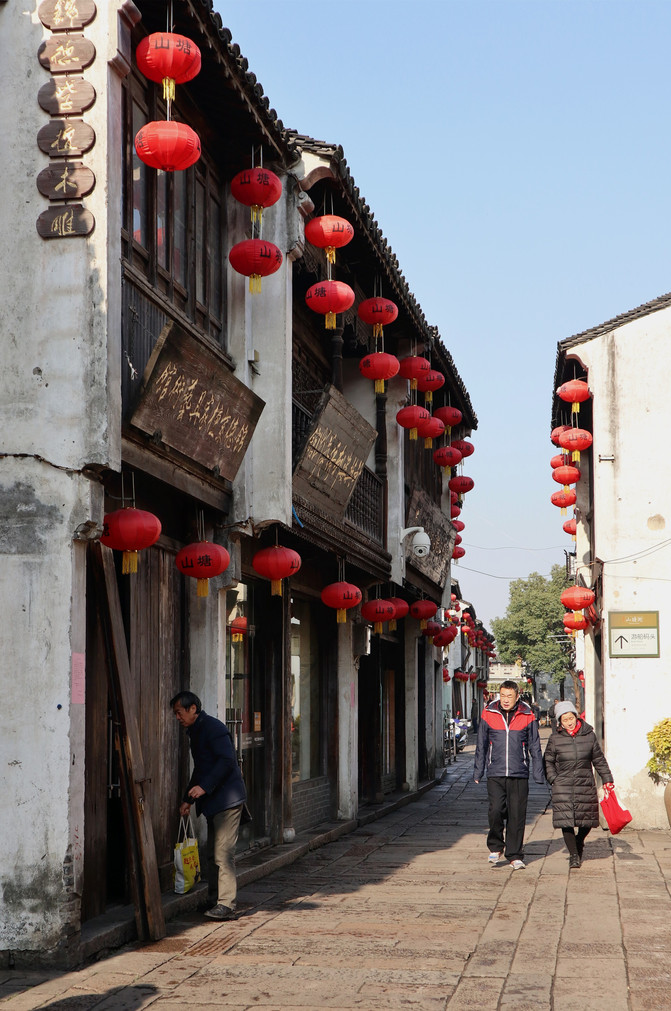
On the third day, visit Luzhi Ancient Town. It has many waters, many bridges, many alleys, many ancient houses and many celebrities. It has always enjoyed the reputation of the "Bridge Capital" in Jiangnan. The most rare thing is that it is still a place where local people live, unlike the famous Zhouzhuang and Wuzhen, where outsiders do business. Especially when you stroll here morning and evening, you can appreciate the original ancient town. It is a very worth visiting.












Huzhou
Huzhou is a city named after the lake in the Taihu Lake area. Attractions near the city include Nanxun Ancient Town, Mogan Mountain, Lianhuazhuang, Feiying Tower, Taihu Lake, etc. I am not interested in any of these attractions. Arriving in Huzhou City, I took a walk in Yiyi Ancient Street. It is said that various pawnshops and banks with Jiuqu Lane as the core formed the most important financial district in Huzhou at that time. River ports, docks, streets, and tracts of buildings from the late Qing Dynasty and the early Republic of China are now preserved. In fact, like Enning Road and Yongqingfang in Guangzhou, there is nothing to see, but I just passed by in a hurry so that I can let go.










The next day I visited the new city and ancient town that I was interested in. It is a small town with a strong flavor of the market. There is not much whitewash. The buildings all maintain their original state in alleys, stone roads, small bridges and running water, white walls and black tiles, and everything has been engraved with the mark of old times. The town is full of the charm of a rich water town and ancient town. People live a leisurely life, just living a leisurely life while maintaining their tranquility. There are no dazzling shops here, let alone the noise of people coming and going. The ancient town is not big, and you can visit it all in an hour or two. You can also spend a whole day savoring its beauty.













Hangzhou
Hangzhou is just the place I chose to turn back during this journey. It is not yet time to return in the morning to go to the West Lake for a morning run. I didn't expect that the autumn colors of the West Lake would be so beautiful. No wonder Su Dongpo once praised the West Lake that "if you visit the West Lake once, you will be immortal"...













Previous Article:One of Yangzhou Roads in Spring Breeze: Slender West Lake
Next Article:Taste Yangzhou and have a tour of the world's gourmet capital
